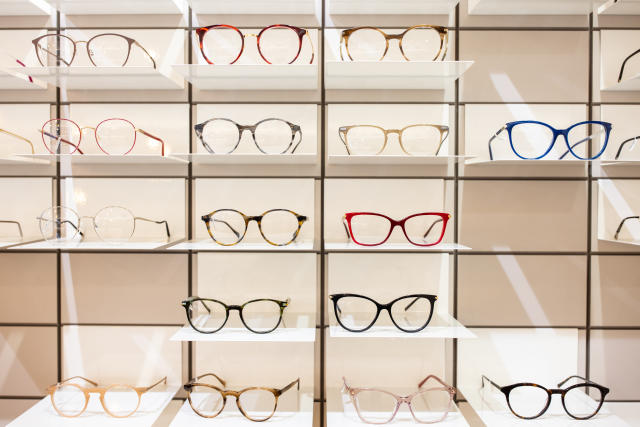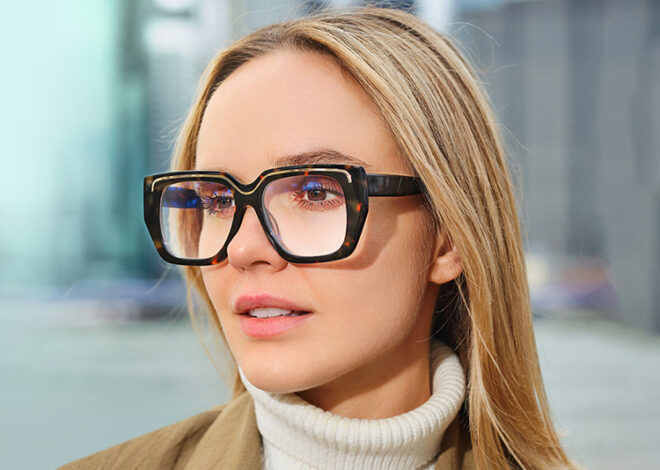
Everything About Reading Glasses
Reading glasses are an essential tool for millions of people worldwide, helping them see up close with clarity and comfort. Whether you’re buying your first pair or wondering if they’re the right choice for you, understanding the role of reading glasses can make a big difference. In this guide, we’ll cover everything you need to know—from choosing the right strength to understanding how they affect your vision.
How Do I Know What Strength Reading Glasses to Get?
Selecting the right strength (also called power or magnification) is crucial for optimal vision. Reading glasses are measured in diopters, typically ranging from +1.00 to +4.00 in increments of 0.25. Here’s how to determine the right strength for you:
- Try an At-Home Test – Many optical stores and websites offer printable reading test charts. Hold the chart about 14–16 inches away and find the lowest magnification that allows you to read comfortably.
- Visit an Optometrist – If you’re unsure, an eye exam can pinpoint the exact power you need, ensuring the best fit for your vision.
- Test Different Strengths – If you’re at a store, try on different pairs and see which one provides the clearest vision without straining your eyes.
A common mistake is choosing a strength that’s too high, which can cause eye fatigue and headaches. Always start with the lowest power that helps you read comfortably.
What Is the Use of Reading Glasses?
Reading glasses are specifically designed to correct presbyopia, an age-related condition where the eye’s natural lens loses flexibility, making it harder to focus on close objects. They help by magnifying text and other nearby details, reducing strain and making reading, writing, and other close-up tasks much easier.
Some common uses of reading glasses include:
- Reading books, newspapers, and menus
- Using smartphones and tablets
- Sewing, knitting, and crafting
- Working on a computer (if you have a pair optimized for screen distance)
- Performing detailed work like repairing small items
Reading glasses are not designed for distance vision, so wearing them while walking or driving isn’t recommended.
Can I Wear Reading Glasses All the Time?
Reading glasses are not meant to be worn all the time—they are specifically for near vision tasks. If you wear them constantly, especially while looking at distant objects, your vision may become blurry, leading to discomfort and eye strain.
However, there are exceptions:
- If You Have Progressive or Bifocal Lenses – These specialized lenses combine reading and distance correction, allowing you to wear them all day.
- If You Have Mild Prescription Needs – Some people with very low-strength reading glasses may not experience significant issues wearing them frequently.
If you find yourself needing glasses constantly for both near and far vision, it might be time to consider prescription bifocals or progressive lenses.
Why Is My Vision Blurry After Using Reading Glasses?
Blurry vision after removing reading glasses is common and usually temporary. Here’s why it happens:
- Your Eyes Adjusted to the Magnification – When you wear reading glasses, your eyes become accustomed to the magnified view. Once you take them off, your eyes need a few moments to readjust.
- The Strength Might Be Too High – If your reading glasses are too strong, they can cause excessive reliance on magnification, leading to temporary blur when removed.
- Your Eyes Are Fatigued – Prolonged reading with any glasses can cause eye strain, making vision slightly blurry when you switch focus.
To reduce this effect, take frequent breaks while using reading glasses and ensure you’re using the correct magnification.
Can Reading Glasses Be Used as Regular Glasses?
Reading glasses and regular prescription glasses serve different purposes. Here’s a breakdown:
- Reading Glasses – Only correct near vision (presbyopia) and do not help with distance vision.
- Regular Glasses – Can correct myopia (nearsightedness), hyperopia (farsightedness), and astigmatism, providing clear vision at various distances.
If you need correction for both near and far vision, multifocal lenses, progressive lenses, or bifocals might be a better option.
However, some people use half-frame reading glasses and simply look over them when they need to see at a distance. This can be a convenient option for those who only need reading glasses occasionally.
Reading glasses are a simple yet effective solution for presbyopia, but choosing the right strength and understanding their limitations is key to maintaining clear and comfortable vision. If you find yourself relying on reading glasses more than expected or experiencing vision issues, a professional eye exam can help determine the best options for you.



